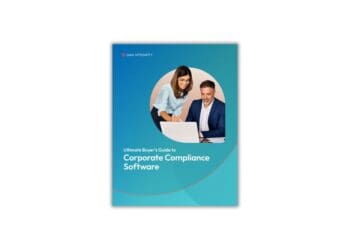A compliance officer’s job can be complicated enough, but some financial institutions impose hardship by having too many disparate solutions working on the same problem. CaseWare RCM’s Eric Hansen explains why working in these compliance silos can make it more difficult for compliance pros to do their job.
A day in the life of a compliance officer is becoming more complex every year – and it’s not just because of the many ways criminals try to legitimize transactions. Some of the complexities faced by compliance officers are accidentally imposed on them by their own institution’s efforts to fight financial crimes by using disparate anti-money laundering (AML) compliance solutions.
With the myriad of regulatory obligations that exist today, many organizations have built solutions to address each unique requirement.
Many financial institutions (FIs) have automated some of these processes wherever viable. But the reality is, many of these processes remain manual in nature – such as checking for adverse media on the internet or reviewing client data from spreadsheets. This can lead to various compliance officers working in silos, processing information in a variety of systems that don’t necessarily communicate with each other.
A compliance officer may start their day by accessing their screening application, then conducting a sanctions search on the OFAC site, then moving on to a separate tool for submitting SARs and so on.
All of these processes do indeed serve their purpose of BSA/AML compliance. However, when we take a step back and look at this from a 30,000-foot view, the picture is very much fragmented.
Sitting in Silos Can Be Dangerous
In a recent discussion I had with a Chief Anti-Money Laundering Officer, she lamented that her financial intelligence unit and her onboarding teams rarely communicate with each other: They sit in separate offices, and they use distinct and separate systems. As a result of this disjointedness, her institution accepted a client for a mortgage, only later discovering this individual had a World-Check hit for various financial crimes. Delayed analysis like this is definitely a symptom of having disparate tools.
In a separate conversation, a compliance officer at a bank observed that over the years, his institution did not consider solutions until they encountered a specific problem. As more regulatory requirements surfaced, the bank would then purchase Band-Aid or add-on solutions for each particular problem.
The Band-Aid approach is problematic for a number of reasons:
- Efficiency – Disparate systems make it difficult for AML investigators to pull together all relevant information as part of their investigation. They often struggle with false positives and incomplete client data as they try to piece together bits of information. Consequently, they spend their time on relatively low-value activity when they ought to be analyzing, investigating and reasoning.
- Incomplete Integration – Separate solutions rarely communicate with one another. Unless there is an established partnership between these systems with robust application program interfaces (APIs), financial institutions (FIs) can spend a significant amount of time re-keying information between systems. And even if there is an API, something could break when there is an update on either end. The most common case is when there is no integration available at all. This leaves a gap that can only be filled with manual processes.
- Auditability – With the specter of compliance looming larger for financial institutions, you cannot afford to have records that are not auditable. If an institution does not have each step of their reviews documented and stored, they could face issues when it comes time for an audit or regulatory exam.
FIs have built up multiple solutions to address their various regulatory obligations but often find these tools working disparately when these tools don’t connect to one another. Technology can become a burden rather than a benefit, and moreover, the systems can fail to catch risks and keep the organization compliant.
Push for Innovation
In a recent survey by Refinitiv, Innovation and the Fight Against Financial Crime, 82 percent of respondents said they are under pressure to be more innovative, and yet 73 percent are struggling to harness technological advancements.
One of the trends when it comes to innovation is a move toward enterprise AML solutions that offer a complete picture, a single platform and an optimal process.
When the processes do work in concert, the organization can realize tremendous benefits. Some of the most tangible benefits of a consolidated system are:
- It enables the compliance team to capture a 360-degree risk view.
- Establishing an increased culture of compliance across the organization – resulting in engagement from all stakeholders – from the front-line all the way up to the C-suite.
- It allows you to build out smart workflows that allow for proper escalation and case management in line with the policies and procedures of the FI.
- It allows the FI to future-proof the system by giving it the flexibility to adapt to new typologies.
This is not a “set it and forget it” exercise. Change will happen; either new regulations are enforced, the business introduces new products or the business expands into new countries. A consolidated system gives you the flexibility to adapt with these business requirements.
Once the organization starts to realize some or all of these issues, then compliance can actually become liberating.



 Eric Hansen (CAMS) is a senior risk specialist at CaseWare RCM. He has been consulting clients globally on matters of risk and compliance for over 10 years. Eric is a member of
Eric Hansen (CAMS) is a senior risk specialist at CaseWare RCM. He has been consulting clients globally on matters of risk and compliance for over 10 years. Eric is a member of 










